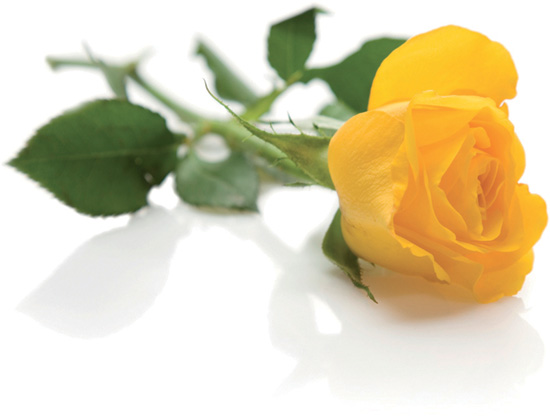Fill an oil burner with water and any type of oil that suits your mood.
Many of our fondest childhood memories are associated with certain smells, such as the aroma of cookies baking or lavender in a pillow. Bring back treasured memories—and create new ones—with flowers, herbs, potpourris or fragrance sachets.
You don’t need artificial products such as air fresheners or fragrance oils to produce pleasant home scents. There are many natural solutions if you are willing to explore a little bit, and the rewards are sweet smells without harsh chemicals.
Remember the basic rule: Don’t overdo it. It is easy to become accustomed to certain fragrances and use too much of them. Here are some tips and tricks.
• Place a big bouquet of fresh flowers, particularly lilacs, roses or lilies, on a table in the corner. It will fill a living or dining room with a wonderful scent.
• Hang herbs such as rosemary, peppermint or thyme to dry from a ceiling or balcony. They give off a pleasant aroma.
• Fill an attractive bowl with fruit and spices, such as oranges, limes, green apples, cinnamon and cloves. It will look decorative and fill the room with intriguing smells.
• Make a potpourri using dried flowers and leaves from aromatic plants. Rose petals, jasmine, lilies, lavender, rosemary, cinnamon sticks and vanilla pods are wonderful additions. Set them out in open bowls or fill a sachet; just make sure all ingredients are thoroughly dried beforehand. To intensify the fragrance, add a drop or two of essential oil.
• Assemble your own potpourris from dried flower petals, fruit, herbs and spices. A sachet or small cushion filled with them makes a special gift.
• In winter, place orange and lemon slices near a heater and let them dry there.
• Use scented candles to create a soft, warm or romantic atmosphere. They don’t have to smell of roses or vanilla—even plain beeswax candles emit a distinctive fragrance.
• Experiment with incense. Using smoke to send prayers to the gods is one of the oldest known forms of ceremony, used in everything from religious censers to pagan bonfire rituals. But incense sticks don’t have to be about religion—they are a good way to spread scent through a room.
• Or opt for an essential oil burner. They are available in many shapes, but the principle is always the same. A candle is placed under a plate or small bowl, which is filled with water and a few drops of essential oil. The flame warms the water–oil mixture and spreads the fragrance throughout the room.
• Make a scent ball: Spread glue on a polystyrene ball and fasten dried flowers from a potpourri on it.
• Stud an orange with cloves and pieces of cinnamon stick. Tie with ribbon and hang up as a pomander.
• Create a simple fragrance dispenser: Fill a lidded jar with rose petals and sprinkle each layer with salt to prevent them from rotting. When you wish to add fragrance to a room, unscrew the jar for a while.
Fragrance sachet
one To make a fragrance sachet, cut two pieces of material each about 2 x 4 inches (5 x 10 cm). Sew them right sides together, along the length of two sides and the width of one. Linen and cotton will work well for sachets, but transparent fabrics such as organza look particularly pretty when filled with colorful petals.
two Turn your bag right-side out. Sew a seam around the open end of the sachet and pull a string through so that it can be closed nicely, or simply tie it closed with a ribbon after filling it.
three Fill the cloth bag with flowers or herbs and tie it off.
POTPOURRI CAN LEND A MILD scent TO ANY AREA OF THE HOME.
The sense of smell is more important than most people realize. Advocates of aromatherapy believe the power of scent can even have a healing effect. Here are some of the more common scents.
• Eucalyptus is a bright, fresh scent that most people find refreshing. It clears the sinuses when you have a cold and your nose is blocked, and some feel it heightens concentration. It may also repel certain insects.
• The bewitching fragrance of lilac is stimulating but can be a little strong. For this reason, it is best to use it sparingly or in conjunction with other scents. In some cultures, lilac is a symbol of love.
• The fragrance of honey can help you relax and dispel nervousness. Because of the healing properties of honey, the ancient Maya regarded the bee as a sacred insect.
• Lavender is thought to have a relaxing and refreshing effect and can act as a counterbalance to nervous tension and depression, and promote sleep. For this reason, it is often found in balms and creams, as well as in aromatherapy products.
• When you are suffering from a cold, use the fragrance of peppermint to clear congestion. Its strong, exhilarating aroma can also enhance your powers of concentration.
• The fragrance of roses is not only beguiling but also has a practical role to play in reducing pain and producing euphoria. It can be helpful to relieve stress in hectic situations.
• In ancient times vanilla was used as an aphrodisiac and for fever reduction, among other things. Recent research suggests that its smell can reduce anxiety.
• The fragrance of cinnamon has a warming and relaxing effect on most people.
• Cloves smell spicy and sweet, and have a mildly sedative effect.
• Patchouli has a strong musky aroma and is thought to have aphrodisiac qualities. It is now more popularly used for rejuvenation.
• Sage has a refreshing, calming odor.
• Rosemary is believed to strengthen the memory.
• Cedar has a warm, grounding aroma and is often used as an aid to meditation.

The scent of roses reduces pain and produces euphoria.